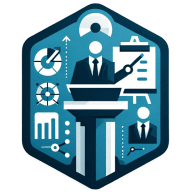How to Tailor Skill Development to Different Learning Styles
In today's fast-paced world, understanding how to tailor skill development to different learning styles is crucial for success. This article delves into effective strategies, backed by insights from experts in the field, to help you create customized training plans, embrace blended methods, and provide flexible options. Discover how adaptive management practices and an understanding of team learning styles can transform your training approach.
- Employ Customized Training Plans
- Embrace Blended Training Methods
- Provide Flexible Training Options
- Utilize Adaptive Management Practices
- Understand Team Learning Styles
Employ Customized Training Plans
Customized Training Plans have been a cornerstone of my approach to equipping team members with the skills and confidence they need to excel. Through my experiences working with individuals and families in recovery, I've learned that no two people's needs are the same, an insight that holds true in professional development as well. Tailoring training programs to meet the unique abilities and aspirations of each team member ensures they not only gain the tools necessary for their roles but also feel genuinely supported in their growth.
To achieve this, I focus on developing personalized roadmaps that align with each individual's strengths, challenges, and goals. This starts with open and honest communication. I take time to understand where someone feels confident and where they see opportunities to grow. I also consider the feedback from colleagues and any performance indicators that shed light on their progress. These insights help create a clear picture of how best to support their development.
Once we've identified their goals, the next step is to break those objectives into actionable steps. This could involve targeted training sessions, peer mentorship opportunities, or hands-on learning experiences that are directly applicable to their work. It's also important to provide variety, whether through workshops, certifications, or even shadowing more experienced team members, so they can learn in ways that resonate with them personally. Each plan is structured to allow for growth at a sustainable pace, enabling team members to feel confident as they acquire new skills.
Equally vital is regularly revisiting these plans to make adjustments as team members grow. As I've often seen in recovery work, progress is rarely linear, and being adaptable ensures that the support we offer stays relevant and meaningful. By focusing on customized development, I've witnessed incredible transformations, not just in terms of skill enhancement but in the confidence and resilience that people gain when they know their growth truly matters.
Embrace Blended Training Methods
In my experience, tailoring skill development to different learning styles within my team has been key to building a knowledgeable and efficient workforce. With over 15 years in the industry and a certification in horticulture, I've learned that no two people absorb information the same way. Some team members learn best through hands-on experience, while others benefit more from visual demonstrations or in-depth discussions. To address this, I take a blended approach. When training a new gardener, for example, I start by explaining the theory behind a task, like pruning techniques, to give them a solid foundation. Then, I demonstrate it myself, showing exactly how to hold and use the tools. Finally, I let them practice under supervision, giving real-time feedback to refine their skills. This way, whether they learn best by hearing, seeing, or doing, they get the knowledge in a way that sticks.
One of the most effective examples of this approach was when I trained a new team member on soil health management. He struggled with technical terms and reading guides but had a great eye for detail. Instead of overwhelming him with written materials, I walked him through a garden bed, showing him different soil textures, explaining how they affect plant health, and demonstrating how to test pH and nutrient levels. I then had him perform the tests himself and interpret the results, reinforcing the learning with practical experience. Within weeks, he was confidently advising clients on soil improvements. My years of hands-on experience and formal education in horticulture helped me break down complex concepts in a way that made sense to him, ultimately leading to better service for our customers.
Provide Flexible Training Options
In our company, we make HR development programs flexible and adaptable to fit the different ways our team learns best. We offer a blend of hands-on workshops, digital courses, and one-on-one coaching to make sure everyone can engage with training materials in a way that works for them. This hybrid approach ensures accessibility for all, from visual and auditory learners to those who benefit from direct, hands-on experience.
For example, in our recent safety training, we rolled out a series of interactive videos for those who prefer self-paced learning, complemented by in-person walkthroughs for employees who benefit from practical demonstrations. Additionally, we have monthly check-ins where team members can discuss their progress and receive additional support or clarification as needed.
This approach has not only improved retention and engagement in training but also fostered a more inclusive atmosphere where each team member feels their learning style is respected. Making training adaptable allows everyone to succeed, enhancing both their skills and confidence on the job.

Utilize Adaptive Management Practices
Adaptive and personalized management has proven to be invaluable as leadership practices shift to meet the demands of the future workplace. Rather than adhering to rigid structures, I've found that tailoring support to recognize each team member's unique skills, goals, and ways of working creates a much stronger, more cohesive team-especially in today's landscape, where remote and hybrid environments are the norm.
I approach this with a coaching-centric mindset, focusing more on mentoring and guiding than directing. This means regular one-on-one check-ins where I listen to each person's career aspirations, discuss how they can align with the firm's broader goals, and provide immediate feedback that can be acted on in real-time. Rather than relying solely on annual reviews, I emphasize continuous development, which builds momentum and keeps us agile.
This approach has been particularly effective because it builds trust and engagement. When team members know they're being heard and supported in ways that fit their personal goals, they become more invested and, ultimately, more productive. It's also a practical method for responding to the rapid shifts in our industry, enabling us to stay resilient and flexible as a team.

Understand Team Learning Styles
It can be challenging to train your team members when there are four main learning styles. Everyone has an opinion on what to do and how to train better. I've found the following to work well: Know your team: When you know your team, you know how they learn. You can then figure out how most people on your team learn. Tailor it to the one or two largest learning styles. Mix learning styles: You can always mix different learning styles. You may show a video for the visual learners and add in a hands-on application for the kinesthetic learners. This way you hit multiple learning styles. Ask for preferences: There's never harm in asking your team how they want to be trained and taught. You may discover some of your assumptions were wrong. You can then tailor make your skill development opportunities to your team.




